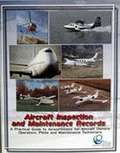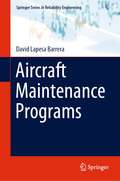- Table View
- List View
Airbnb Listing Hacks: The Complete Guide To Maximizing Your Bookings And Profits
by Alex WongAirbnb has become something of a phenomenon recently. Every day, in every town on the planet, homeowners are making money by renting out their spare rooms to travelers. But with more and more people catching on, it's becoming increasingly difficult to stand out from the crowd. <p><p> This new book, Airbnb Listing Hacks: The Complete Guide to Maximizing Your Bookings and Profits can make all the difference in helping you stand out. <p> Years of helping hosts to optimize their listings, along with all the techniques required for success and how to avoid the common mistakes most hosts make, are crammed into this informative asset.
Airbnb Secrets: Earn $5000 A Month Posting Your Pad
by Sebastian RitterLooking to make some extra cash by renting out that spare room? Or maybe you want to dive into a full-on investment property! Making money through property rentals has never been more accessible and this guide will tell you everything you need to know about how to get started, how to be successful, and how to set yourself apart from the rest.
Airbnb in Amsterdam (A)
by Emer Moloney Vincent Dessain Mitchell WeissIn February 2014, Amsterdam became the first city to issue new regulations specifically to allow home-sharing. Airbnb's Molly Turner, Global Head of Civic Partnerships; her colleagues at the San Francisco based home-sharing platform; and her counterparts in Amsterdam's city leadership now had to make the new rules function well. By the summer of 2014, the question of how exactly to do that remained unsettled. A Memorandum of Understanding (MOU) that Airbnb was negotiating with Amsterdam officials to supplement the new home-sharing rules was not materializing. Turner was hearing that the company's proposed commitments that spanned education on regulations, enforcement-assistance, and tax collection might not be enough to secure what would be Airbnb's broadest partnership with any city anywhere. Nanette Schippers was Amsterdam's Advisor on the Sharing Economy in its Innovation Office, and its lead at the negotiating table that summer. She was worried by the stand-still, too. A primary reason for the impasse in the negotiations was that Amsterdam wanted access to Airbnb's data in order to enforce the new laws more easily, while Airbnb sought to protect user privacy. For Airbnb, privacy, precedents and platform principles were at stake. For Amsterdam, it was a matter of making sure that the historic city did not become "Venice, or Florence, or 'Disneyland'"; that it wasn't overrun by visitors and that locals weren't crowded out. Could the two parties now find dry land?
Airbnb in Amsterdam (B)
by Emer Moloney Vincent Dessain Mitchell WeissIn December 2014, the City of Amsterdam and Airbnb announced an MOU to promote responsible home-sharing and to simplify the payment of tourist tax for hosts in the City. It was the most comprehensive agreement that Airbnb had with any city in the world. It's final provision read, "The parties trust that theirs will be a fruitful cooperation." However, both sides were uncertain about how the agreement would be received. Molly Turner, Airbnb's Global Head of Civic Partnership and Tanja de Coster, an Airbnb lawyer in Europe, were unsure how Airbnb's hosts would react. As were their Airbnb colleagues. Laila Frank, who had been an advisor to the Deputy Mayor in Amsterdam, heralded the reputational gains from the agreement for the city, "We were worldwide news. In that way it worked out really well." But she acknowledged that there were also skeptical points of view. "The only immediate result was the tax agreement, which we were really happy about. But the rest had to be proven."
Airbnb, Etsy, Uber: Acquiring the First Thousand Customers
by Thales S. Teixeira Morgan BrownBy 2016, two-sided online platforms (or marketplaces) were pervasive among the highest growing internet startups around. These marketplaces sought to match suppliers of assets for rent, physical products or services with customers demanding them. Among the most notable two-sided platforms in terms of their tremendous early growth were Airbnb, Etsy and Uber. They offered short-term property rentals, handcrafted goods, and car rides, respectively. As two-sided markets grew to scale, network effects kicked in as more consumers bred more suppliers and vice versa. But how did these platforms acquire their first customers, at the time when they had so few providers? How exactly did they go about acquiring their first thousand customers?
Airbnb, Etsy, Uber: Growing from One Thousand to One Million Customers
by Thales S. Teixeira Morgan BrownBy 2016, two-sided online platforms (or marketplaces) were pervasive among the highest growing internet startups around. These marketplaces sought to match suppliers of assets for rent, physical products or services with customers demanding them. Among the most notable two-sided platforms in terms of their tremendous early growth were Airbnb, Etsy and Uber. They offered short-term property rentals, handcrafted goods, and car rides, respectively. As two-sided markets grew to scale, network effects kicked in as more consumers bred more suppliers and vice versa. But how did these platforms ride the second wave of growth? How did they grow from one thousand to one million customers?
Airborne Express
by Jan W. RivkinIn the wake of a highly successful quarter, senior managers of Airborne Express, the third largest player in the express mail industry, review the firm's competitive position. Airborne has survived, and recently prospered, in an industry with significant economies of scale even though it is much smaller than industry giants Federal Express and United Parcel Service. The case challenges students to understand Airborne's unusual position. Detailed data allow students to analyze Airborne's relative cost position, the fit among its activities, the differences between Airborne and its rivals, and the evolution of its industry. Using these analyses, students make recommendations concerning the firm's pricing policy, its globalization efforts, and a partnership with a related company. Designed to be taught in a course on business-unit strategy.
Airborne Wind Energy: An Overview of the Technological Approaches (Green Energy and Technology)
by Uwe AhrensThis book shows possible solutions to how a profitable energy supply can be implemented with almost no population resistance. Worldwide, more than 80 % of our energy needs are still covered by fossil fuels. Under these circumstances, can climate change still be stopped? Essential technologies for usage of wind energy with an emphasis on high-altitude wind utilization are presented. Airborne wind energy is one of the most promising technologies to enable a renewable energy turnaround in an economical way. The main problem of conventional renewable energy is the insufficient availability. To ensure a 100 % supply of renewable energy, enormous and very expensive storage capacities would have to be built up. How we can cover our entire energy needs (electricity, mobility and heat) in the future without fossil fuels, without risking the competitiveness of our economy, is shown in this book.
Airbus A3XX: Developing the World's Largest Commercial Jet (A)
by Michael Kane Benjamin C. EstyIn July 2000, Airbus Industries' supervisory board is on the verge of approving a $13 billion investment for the development of a new super jumbo jet known as the A3XX that would seat from 550 to 1,000 passengers. Having secured approximately 20 orders for the new jet, the board must decide whether there is sufficient long-term demand for the A3XX to justify the investment. At the time, Airbus was predicting that the market for very large aircraft (VLA), those seating more than 500 passengers, would exceed 1,500 aircraft over the next 20 years and would generate sales in excess of $350 billion. According to Airbus, it needed to sell 250 aircraft to break even and could sell as many as 750 aircraft over the next 20 years. This case explores the two sets of forecasts and asks students whether they would proceed with the launch given the size of the investment and the uncertainty in long-term demand.
Airbus A3XX: Developing the World's Largest Commercial Jet (B)
by Michael Kane Benjamin C. EstySupplements the (A) case.
Airbus versus Boeing (A)
by Ramon Casadesus-Masanell Eric Van Den SteenLooks at the development of the competitive actions between Airbus and Boeing from 1992 to 2006. Begins with the question of whether Airbus and Boeing should collaborate on the development of a VLCT (Very Large Commercial Transport) or whether Airbus should develop their own. The case series moves through to the events thereafter of Airbus' decision to pursue the A380 and Boeing's decision relating to developing a stretch 747.
Airbus versus Boeing (A)
by Ramon Casadesus-MasanellLooks at the development of the competitive actions between Airbus and Boeing from 1992 to 2006. Begins with the question of whether Airbus and Boeing should collaborate on the development of a VLCT (Very Large Commercial Transport) or whether Airbus should develop their own. The case series moves through to the events thereafter of Airbus' decision to pursue the A380 and Boeing's decision relating to developing a stretch 747.
Airbus vs. Boeing (A)
by Ramon Casadesus-Masanell Jordan Mitchell Erich Alexander VoigtLooks at the development of the competitive actions between Airbus and Boeing from 1992 to 2006. Begins with the question of whether Airbus and Boeing should collaborate on the development of a VLCT (Very Large Commercial Transport) or whether Airbus should develop their own. The case series moves through to the events thereafter of Airbus' decision to pursue the A380 and Boeing's decision relating to developing a stretch 747.
Airbus vs. Boeing (A): Turbulent Skies
by Malcolm S. Salter Irence L. SinrichPresents the economic and political dimensions of competition in the commercial aircraft industry, as demonstrated by Airbus of Europe and Boeing of the United States.
Airbus vs. Boeing (B): Should Airbus Build the VLCT Alone?
by Ramon Casadesus-Masanell Jordan MitchellAn abstract is not available for this product.
Airbus vs. Boeing (G): New Planes and Upgrades (2011)
by Ramon Casadesus-Masanell Karen EltermanThis case describes the first commercial flight of Boeing's 787 Dreamliner in 2011, three years after originally planned, as well as the first commercial flight of Airbus's superjumbo, the A380, in 2007. It also describes the companies' current endeavors in 2011, including Airbus's work on the A350 and A320neo and Boeing's development of the 737 MAX.
Airbus vs. Boeing (G): The Dreamliner Takes to the Skies (2011)
by Ramon Casadesus-Masanell Karen EltermanThis case describes the first commercial flight of Boeing's 787 Dreamliner in 2011, three years after originally planned, as well as the first commercial flight of Airbus's superjumbo, the A380, in 2007. It also describes the companies' current endeavors in 2011, including Airbus's work on the A350 and A320neo and Boeing's development of the 737 MAX.
Airbus vs. Boeing (H): Wing Cracks and Battery Fires (2013)
by Ramon Casadesus-Masanell Karen EltermanThis case describes an issue with the batteries of Boeing's 787 Dreamliner planes overheating and sometimes catching fire in 2013. The planes were grounded for several months until Boeing introduced new safety measures. The case also discusses a problem with cracks on the wings of Airbus's A380 superjumbo, which required the company to make a costly fix to a particular wing component.
Airbus vs. Boeing (I): Airbus Introduces the A350 (2015)
by Ramon Casadesus-Masanell Karen EltermanThis case describes the introduction of Airbus's A350XWB (Xtra Wide Body) in 2015. It also describes Airbus and Boeing's current endeavors in 2015, including Airbus's development of the A330neo, Boeing's work on the 737 MAX, and Boeing's announcement of the 777X.
Airbus vs. Boeing (J): New Plane Developments (2016)
by Ramon Casadesus-Masanell Karen EltermanThis case describes Airbus and Boeing developments in 2016, including Airbus's delivery of the first A320neo and Boeing's work on the 737 MAX and 777X programs. It also notes Airbus's restructuring in 2016.
Airbus vs. Boeing (K): New Partnerships (2018)
by Ramon Casadesus-Masanell Karen EltermanThis case describes Airbus's partnership with the Montreal-based aircraft manufacturer Bombardier beginning in 2017. The two companies partnered on the C Series of aircraft (later named the A220 Family), which consisted of small aircraft with 100-150 seats. The case also describes Boeing's 2018 joint venture with the Brazilian aerospace company Embraer, which produced the E2 Family of planes (97-120 seats).
Airbus vs. Boeing (L): Discontinuing the A380 (February 2019)
by Ramon Casadesus-Masanell Karen EltermanThis case describes Airbus's February 2019 announcement that it was ending production of the A380, with the last delivery scheduled for 2021. The announcement followed an order cancellation by Emirates, a major customer of the A380. The A380 had faced significant competition from Boeing's Dreamliner, and airlines had difficulty filling their A380s enough to make them fuel efficient and cost effective. Since the plane's launch, Airbus had sold far fewer A380s than it initially predicted.
Airbus vs. Boeing (M): MAX 8 Disasters (July 2019)
by Ramon Casadesus-Masanell Karen EltermanThis case describes the October 2018 and March 2019 crashes of Boeing MAX 8 jets, which together killed over 300 passengers. The planes involved in both crashes shared a problem with a software system called MCAS, which Boeing had revamped at the last minute prior to selling the planes, but had failed to mention in its pilot manuals until after the first crash. As of July 2019, the MAX 8 remained grounded worldwide. As the investigation into the MAX 8 continued, a simultaneous investigation into a Boeing 787 factory found that the company had repeatedly ignored reports of manufacturing defects and debris left on 787s from the factory.
Aircraft Inspection And Maintenance Records: A Practical Guide To Airworthiness For Aircraft Owners, Operators, Pilots, And Maintenance Technicians
by JeppesenA practical guide to airworthiness for maintenance technicians, aircraft owners, operators, and pilots. This completely rewritten and revised fourth edition is much more than a simple introduction, this book is actually a reference, technical manual, and textbook rolled into one. Packed with photos, checklists, and concrete maintenance entries, Aircraft Inspections & Maintenance Records is an essential reference for industry professionals, students, and flying enthusiasts. Four new additional chapters incorporate many updated topics such as airworthiness determination inspection and maintenance documentation and record entries, and PIC airworthiness checks and responsibilities.
Aircraft Maintenance Programs (Springer Series in Reliability Engineering)
by David Lapesa BarreraThis book provides the first comprehensive comparison of the Aircraft Maintenance Program (AMP) requirements of the two most widely known aviation regulators: the European Aviation Safety Agency (EASA) and the Federal Aviation Administration (FAA). It offers an in-depth examination of the elements of an AMP, explaining the aircraft accident investigations and events that have originated and modelled the current rules. By introducing the Triangle of Airworthiness model (Reliability, Quality and Safety), the book enables easier understanding of the processes by which an aircraft and its components are deemed to be in a safe condition for operation from a cost-effective and optimization perspective. The book compares the best practices used by top airlines and compiles a series of tools and techniques to improve the standards of the AMP. Aircraft maintenance engineers, students in the field of aerospace engineering, and airlines staff, as well as researchers more widely interested in safety, quality, and reliability will benefit from reading this book





